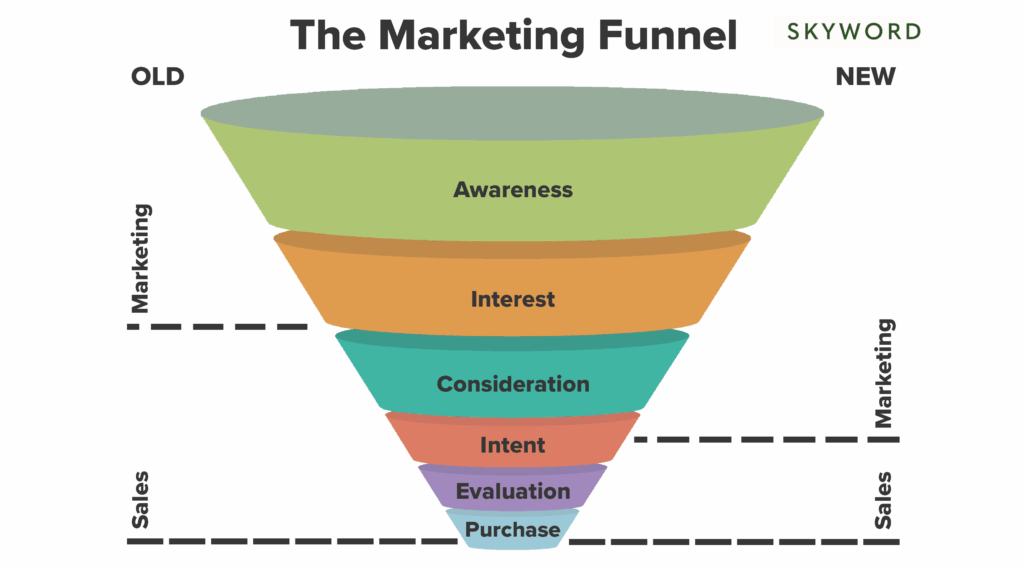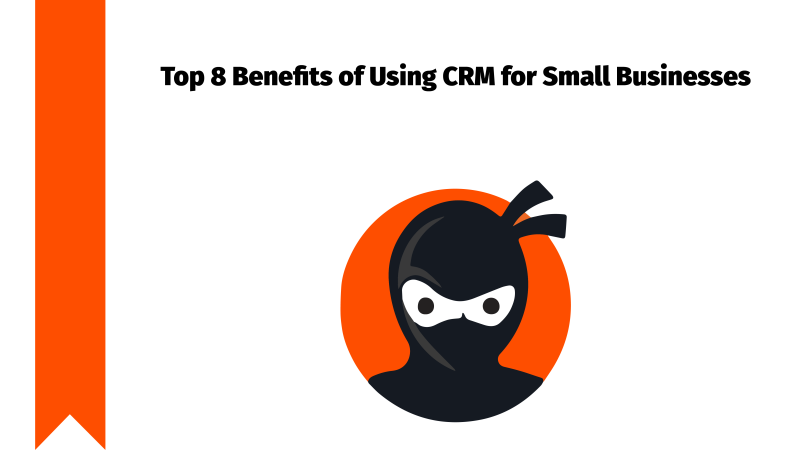
Mastering the CRM Marketing Funnel: A Step-by-Step Guide to Setup and Optimization
In today’s competitive landscape, businesses are constantly seeking ways to enhance customer relationships and drive sales. A Customer Relationship Management (CRM) system is a powerful tool for achieving these goals. But simply having a CRM isn’t enough; you need to configure it effectively to manage your marketing funnel. This comprehensive guide will walk you through the process of setting up and optimizing your CRM marketing funnel, ensuring you convert leads into loyal customers.
Understanding the CRM Marketing Funnel
Before diving into the setup, let’s clarify what a CRM marketing funnel is. It’s a visual representation of the customer journey, from the initial contact to becoming a loyal customer. The funnel helps you understand where your leads are in the sales process and what actions are needed to move them to the next stage. It typically consists of several stages:
- Awareness: The potential customer becomes aware of your brand or product.
- Interest: The potential customer shows interest in your offering.
- Decision: The potential customer evaluates your offering and considers a purchase.
- Action: The potential customer makes a purchase.
- Retention: The customer becomes a repeat buyer and advocate for your brand.
A well-defined CRM marketing funnel allows you to personalize your marketing efforts, track customer interactions, and measure the effectiveness of your campaigns. By understanding each stage of the funnel, you can tailor your messaging, content, and offers to meet the specific needs of your audience.
Choosing the Right CRM System
The first step in setting up your CRM marketing funnel is selecting the right CRM system. Several options are available, each with its strengths and weaknesses. Consider the following factors when making your decision:
- Business Size: Small businesses may benefit from simpler, more affordable CRM systems, while larger enterprises may need more robust solutions with advanced features.
- Industry: Some CRM systems are designed specifically for certain industries, such as real estate, healthcare, or e-commerce.
- Features: Consider the features you need, such as contact management, lead scoring, email marketing integration, sales automation, and reporting.
- Integration: Ensure the CRM system integrates with your existing tools and platforms, such as your website, email marketing software, and social media channels.
- Scalability: Choose a CRM system that can grow with your business and handle increasing data volumes and user numbers.
- Budget: CRM systems range in price from free to thousands of dollars per month. Determine your budget and find a system that offers the features you need within your price range.
Some popular CRM systems include:
- Salesforce: A leading CRM platform with a wide range of features and integrations, suitable for businesses of all sizes.
- HubSpot CRM: A free CRM system with powerful marketing and sales tools, ideal for small to medium-sized businesses.
- Zoho CRM: A comprehensive CRM system with affordable pricing and a user-friendly interface.
- Microsoft Dynamics 365: A powerful CRM platform that integrates with other Microsoft products.
- Pipedrive: A sales-focused CRM system with a visual pipeline and easy-to-use interface.
Research these options and compare their features, pricing, and reviews to find the best fit for your business.
Setting Up Your CRM Marketing Funnel: A Step-by-Step Guide
Once you’ve chosen your CRM system, it’s time to set up your marketing funnel. Follow these steps to create an effective funnel:
1. Define Your Funnel Stages
The first step is to define the stages of your marketing funnel. While the basic stages (Awareness, Interest, Decision, Action, Retention) are a good starting point, you can customize them to reflect your specific sales process and customer journey. For example, you might add stages like “Lead Qualified,” “Proposal Sent,” or “Negotiation.” The more granular your stages, the better you can track and analyze your funnel performance.
2. Create Lead Scoring Rules
Lead scoring is the process of assigning points to leads based on their behavior and demographics. This helps you prioritize leads and focus your efforts on those most likely to convert. In your CRM system, create rules to score leads based on factors such as:
- Website activity: Pages visited, content downloaded, time spent on site.
- Email engagement: Opens, clicks, replies.
- Social media engagement: Likes, shares, comments.
- Demographics: Job title, company size, industry.
- Form submissions: Information provided in forms.
Assign points to each activity or characteristic, and set a threshold for a lead to be considered qualified. This will help your sales team focus on the most promising leads.
3. Segment Your Audience
Segmentation involves dividing your audience into groups based on shared characteristics, such as demographics, behavior, or purchase history. Segmentation allows you to personalize your marketing messages and offers, increasing their relevance and effectiveness. In your CRM system, create segments based on factors like:
- Demographics: Age, gender, location, income.
- Behavior: Website activity, email engagement, purchase history.
- Interests: Topics they’ve shown interest in, products they’ve viewed.
- Lead source: Where they came from (e.g., website, social media, paid ads).
Use these segments to tailor your marketing campaigns and deliver the right message to the right audience.
4. Develop Content for Each Stage
Content is the fuel of your marketing funnel. You need to create content that addresses the needs and interests of your audience at each stage of the funnel. Here’s a breakdown of content ideas for each stage:
- Awareness: Blog posts, social media updates, infographics, videos, webinars, podcasts. The goal is to introduce your brand and provide valuable information.
- Interest: Case studies, ebooks, white papers, product demos, free trials, checklists. The goal is to provide more in-depth information and build trust.
- Decision: Product comparisons, testimonials, reviews, pricing guides, consultations, special offers. The goal is to help leads make a purchase decision.
- Action: Clear calls to action (CTAs) on your website and in your marketing materials, easy-to-use checkout process.
- Retention: Newsletters, exclusive content, loyalty programs, surveys, personalized recommendations, customer support. The goal is to keep customers engaged and encourage repeat purchases.
Make sure your content is high-quality, informative, and engaging. Optimize it for search engines to increase visibility.
5. Automate Your Marketing Campaigns
Automation is key to scaling your marketing efforts and nurturing leads through the funnel. Your CRM system should allow you to automate various tasks, such as:
- Email marketing: Set up automated email sequences to nurture leads, onboard new customers, and send transactional emails (e.g., order confirmations, shipping updates).
- Lead nurturing: Create automated workflows to send targeted content and offers to leads based on their behavior and demographics.
- Task assignment: Automatically assign tasks to sales representatives based on lead activity or stage in the funnel.
- Social media posting: Schedule social media posts to promote your content and engage with your audience.
- Reporting and analytics: Automate the generation of reports to track your funnel performance and identify areas for improvement.
Automation frees up your time so you can focus on more strategic initiatives.
6. Integrate with Your Website and Other Tools
To maximize the effectiveness of your CRM marketing funnel, integrate it with your website and other marketing tools. This will allow you to track customer interactions across all channels and gain a holistic view of the customer journey. Integrate your CRM with:
- Website: Use website tracking codes to track user behavior, such as page views, form submissions, and downloads.
- Email marketing software: Integrate your CRM with your email marketing platform to sync contact information and automate email campaigns.
- Social media platforms: Connect your CRM to your social media accounts to track social media engagement and manage social media advertising campaigns.
- Landing pages: Integrate your CRM with your landing page software to capture leads and track conversions.
- Live chat software: Integrate live chat software to track customer interactions and provide real-time support.
These integrations will provide a seamless customer experience and improve your marketing effectiveness.
7. Track and Analyze Your Results
Tracking and analyzing your results is crucial to optimizing your CRM marketing funnel. Use your CRM system’s reporting and analytics features to monitor key metrics such as:
- Conversion rates: Track the percentage of leads that convert from one stage to the next.
- Sales cycle length: Measure the time it takes for a lead to become a customer.
- Customer acquisition cost (CAC): Calculate the cost of acquiring a new customer.
- Customer lifetime value (CLTV): Estimate the total revenue a customer will generate over their lifetime.
- Website traffic: Monitor website traffic and track user behavior.
- Email open and click-through rates: Measure the effectiveness of your email campaigns.
- Lead source performance: Identify the sources that generate the most qualified leads.
Use these metrics to identify areas for improvement in your funnel and make data-driven decisions. Regularly review your funnel performance and make adjustments as needed.
Optimizing Your CRM Marketing Funnel
Setting up your CRM marketing funnel is just the beginning. Ongoing optimization is essential to ensure its effectiveness. Here are some tips for optimizing your funnel:
- A/B test your content: Experiment with different headlines, copy, images, and calls to action to see what resonates best with your audience.
- Personalize your messaging: Use personalization tokens in your email campaigns and tailor your content to different customer segments.
- Improve your lead scoring rules: Continuously refine your lead scoring rules to identify the most qualified leads.
- Refine your funnel stages: Adjust your funnel stages based on your sales process and customer journey.
- Monitor your competitors: Analyze your competitors’ marketing funnels to identify best practices and opportunities for improvement.
- Stay up-to-date with industry trends: Keep abreast of the latest marketing trends and technologies to ensure your funnel remains effective.
- Get feedback from your sales team: Gather feedback from your sales team on the quality of leads and the effectiveness of your marketing efforts.
By continually optimizing your CRM marketing funnel, you can improve your conversion rates, increase sales, and build stronger customer relationships.
Best Practices for a Successful CRM Marketing Funnel
To maximize the effectiveness of your CRM marketing funnel, follow these best practices:
- Focus on the customer: Always put the customer first and tailor your marketing efforts to their needs and interests.
- Provide value: Offer valuable content and resources at each stage of the funnel to build trust and establish your brand as a thought leader.
- Be consistent: Maintain a consistent brand voice and messaging across all channels.
- Be patient: Building a successful CRM marketing funnel takes time and effort. Don’t expect overnight results.
- Be data-driven: Use data to inform your decisions and measure the effectiveness of your marketing efforts.
- Stay flexible: Be prepared to adapt your funnel as your business evolves and your customer needs change.
- Train your team: Ensure your sales and marketing teams are properly trained on how to use the CRM system and manage the marketing funnel.
By implementing these best practices, you can create a robust and effective CRM marketing funnel that drives sales and fosters long-term customer relationships.
Conclusion
Setting up and optimizing a CRM marketing funnel is a valuable investment for any business. By understanding the customer journey, defining your funnel stages, creating targeted content, and automating your marketing efforts, you can convert leads into loyal customers and achieve your business goals. Remember to continually track and analyze your results, make data-driven decisions, and optimize your funnel to ensure its ongoing effectiveness. With the right CRM system and a well-executed strategy, you can harness the power of the CRM marketing funnel to drive sustainable growth and success.


